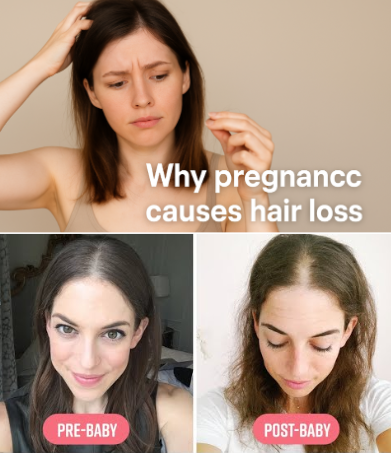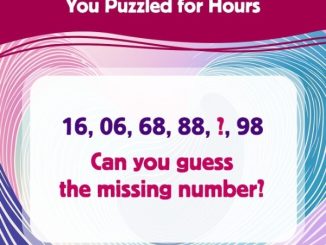
Pregnancy is one of the most transformative times in a woman’s life, but it doesn’t just bring glowing skin and cravings—it also changes your hair. You might notice your strands looking fuller while pregnant, only to face a wave of shedding after delivery. This shift can feel alarming, but the truth is, it’s completely normal. Let’s dive into why pregnancy causes hair loss, what’s happening inside your body, and how you can manage it without panic.
The Hair Growth Cycle Explained
At any given time, about 90% of your hair is in the growth phase (called the anagen phase) while the remaining 10% rests in the telogen phase. Normally, hair in the telogen phase falls out after 2–3 months, making room for new growth. During pregnancy, high levels of estrogen essentially “freeze” hair in the growth phase, which is why many women experience thick, luscious hair throughout those nine months.
The catch? Once you give birth, estrogen levels plummet, releasing all those resting hairs at once. That’s when postpartum hair loss hits, often around the three-to-four-month mark.
Causes of Hair Loss During and After Pregnancy
While hormonal changes are the main culprit, other factors can play a role in pregnancy-related hair loss. Let’s break them down.
Genetics and Family History
If your mother or grandmother experienced significant hair loss after pregnancy, chances are higher that you will too. Genetics can determine how sensitive your hair follicles are to hormonal shifts, meaning postpartum shedding may simply run in the family.
PCOS (Polycystic Ovarian Syndrome)
PCOS is a hormonal disorder where the ovaries produce excess androgens (male hormones). This can cause excessive body hair in some areas while triggering thinning or loss on the scalp. Women with PCOS may notice postpartum shedding is more severe or prolonged compared to those without the condition.
Thyroid Disorders
Your thyroid gland regulates metabolism, energy, and even hair health. Hypothyroidism (an underactive thyroid) is relatively common during and after pregnancy, and it often leads to hair thinning, brittle nails, and fatigue. If your shedding feels extreme, it’s worth checking your thyroid levels with a doctor.
Hormonal Fluctuations
This is the most obvious factor. The dramatic drop in estrogen after delivery shifts more hair into the telogen phase, a condition often called telogen effluvium. While it can be shocking to see clumps of hair in the shower drain, the good news is it usually resolves within 6–12 months.
Video : Is It Normal For Your Hair To Fall Out During Pregnancy | PeopleTV
Scalp and Skin Conditions
Pregnancy can sometimes trigger scalp issues like dermatitis, fungal infections, or allergic reactions. These conditions weaken hair follicles, causing breakage or thinning. Treating the scalp with gentle, dermatologist-approved products can make a big difference.
Illness and Medications
Gestational diabetes, high blood pressure, or even infections can impact hair health. Medications for depression, anxiety, or hypertension may also contribute to shedding. If you suspect your treatment is worsening hair loss, always talk to your doctor before making changes.
Nutritional Deficiencies
Your body works overtime during pregnancy and needs more nutrients—especially iron. Morning sickness, nausea, and vomiting in the first trimester often deplete nutrient stores. Iron deficiency anemia is a common cause of postpartum hair loss. Interestingly, even too much of certain vitamins, like vitamin A, can have the same effect. Striking a balance with nutrition is key.
Other Factors That May Trigger Hair Loss
Beyond the usual suspects, several other situations can accelerate hair shedding during or after pregnancy:
- Birth control pills: Hormonal contraceptives may alter hair growth cycles.
- Miscarriage or abortion: Hormonal fluctuations can mirror postpartum shedding.
- Emotional or physical stress: Trauma, lack of sleep, and exhaustion can push more hair into the resting phase.
What to Expect After Delivery
Most women experience the heaviest shedding around 3–6 months postpartum. While it may feel dramatic, postpartum hair loss rarely leads to bald spots. Instead, you’ll notice thinner ponytails, more hair in your brush, or baby hairs sprouting around your hairline. The reassuring part? By your baby’s first birthday, your hair growth should be back on track.
Tips to Manage Pregnancy-Related Hair Loss
- Stay gentle: Use wide-toothed combs, avoid tight hairstyles, and skip harsh treatments like bleaching or chemical straightening.
- Boost nutrition: Eat iron-rich foods like leafy greens, beans, and lean meats. Pair with vitamin C for better absorption.
- Check your scalp health: Use mild shampoos and keep your scalp clean without over-washing.
- Balance stress: Meditation, light exercise, and proper rest help regulate hormones and support hair recovery.
- Consult a doctor: If hair loss continues past 12 months or is extreme, get checked for thyroid issues, anemia, or other underlying conditions.
Video : Does pregnancy cause hair loss? | Dr. Angela Phipps
Conclusion: Don’t Panic—It’s Temporary
Hair loss during or after pregnancy can be unsettling, but it’s usually a natural part of your body’s hormonal reset. Most women regain their pre-pregnancy fullness within a year. Think of it less as “losing hair” and more as your body recalibrating. Focus on nourishing your body, being gentle with your strands, and giving yourself grace through the process. After all, your body just did something incredible—it deserves patience as it heals and restores.


